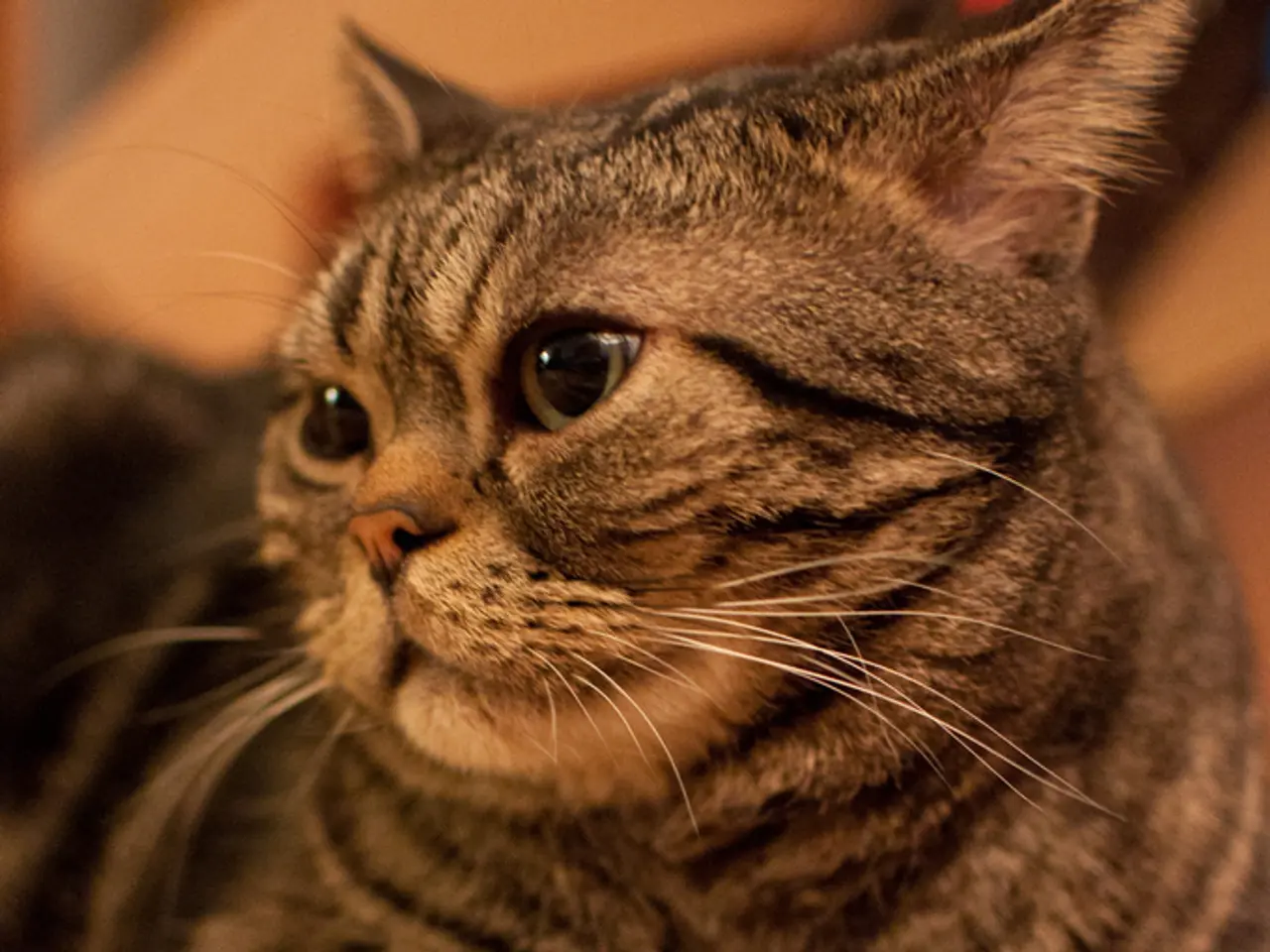Veterinary-Recommended Weight Loss Strategies for Cats
Obesity in cats can lead to a host of health problems, including diabetes, joint pain, and heart disease. To help your feline friend shed excess pounds, it's essential to implement a gradual diet and exercise plan that prioritizes controlled calorie reduction, healthy food choices, and increased physical activity.
The Diet Plan
A good starting point is to use your cat's regular food but reduce portions to lower calorie intake. Aim for about a 25-40% calorie reduction overall. Measuring cat food accurately is crucial, and this includes counting all calories from food, treats, and supplements.
Consider switching to wet cat food, which tends to have fewer calories and higher moisture, helping your cat feel full while eating less. Look for foods with added fiber, such as beet pulp, cellulose, or psyllium, to promote satiety and digestion.
For severely overweight cats, consult your vet about prescription weight loss diets or high-protein weight management foods. Treats should be given sparingly, making up no more than 10% of daily calories, and use healthy, nutrient-dense treats such as small amounts of vegetables or a portion of your cat’s own food as treats throughout the day.
Transition your cat gradually to any new diet to ensure adequate nutrition and avoid digestive upset. The goal is to feed for the cat's ideal body weight, not the current one.
The Exercise Plan
Daily interactive play is essential. Use toys like a wand with ribbons, toy mice to chase, or laser pointers to encourage active movement. Environmental enrichment is key: build or buy climbing towers, scratching posts, or even install a wall-mounted cat track or system of shelves to stimulate climbing and jumping, which helps burn calories and reduce boredom.
Use food-dispensing toys like puzzle feeders or feeding balls that make your cat work for their food, increasing activity while eating. Place food in locations that require movement to reach, such as on top of stairs or climbing structures.
Start exercise slowly for obese cats who may tire quickly, gradually increasing activity levels as fitness improves. Puzzle feeders can increase a cat's energy expenditures by requiring mental and physical engagement during meals. Using a cat puzzle feeder or snuffle mat can encourage foraging behavior in cats, tapping into their innate hunting mindset.
The overall goal is a consistent, balanced approach involving diet moderation and enriched play that results in slow, sustained weight loss, improving your cat’s health, energy, and longevity without stress or nutritional risk. Always involve your veterinarian in planning and monitoring your cat’s weight loss journey.
Before starting a weight-loss program for a cat, it is recommended to visit a vet for a physical exam and potential laboratory tests. It's important to weigh the cat at the beginning of the weight loss program and adjust the food quantity if necessary. Every cat has a different metabolism, so it may take some trial and error to find the food quantity that helps promote weight loss for a specific cat.
Indoor cats typically lead sedentary lives, but there are ways to increase their activity level. Weight loss cat foods, available over-the-counter, can help in weight loss and are designed to fill the cat up while providing fewer calories. Offering toys before feeding as part of a play sequence can make cats look forward to smaller meals.
Short bursts of activity are more realistic for cats compared to long periods of exercise. Interactive cat toys can encourage cats to be more active. Being overweight in cats can lead to several serious health problems, including diabetes, osteoarthritis, FLUTD, cancer, cardiovascular issues, and poor grooming. Therefore, it's crucial to prioritize your cat's health and well-being by implementing a safe and effective weight loss plan.
- To ensure your cat's health, consult a veterinarian before beginning weight loss initiatives.
- A gradual diet plan focusing on controlled calorie reduction, healthy food choices, and increased physical activity is advisable.
- Switching to wet cat food or choosing options with added fiber can help manage a cat's calorie intake and promote satiety.
- Prescription weight loss diets or high-protein weight management foods may be recommended for severely obese cats.
- Treats should constitute no more than 10% of a cat's daily calorie intake, opting for nutrient-dense treats like vegetables or part of their regular food.
- Daily interactive play with toys is essential for increasing physical activity, such as wound toys, toy mice, or laser pointers.
- Environmental enrichment like climbing towers, scratching posts, and wall-mounted cat tracks also help stimulate activity and reduce boredom.
- Food-dispensing toys can increase activity levels while eating, tapping into a cat's innate hunting mindset, and contributing to sustained weight loss.




